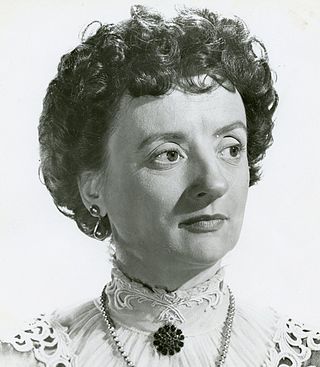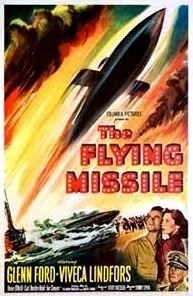
Citizen Kane is a 1941 American drama film directed by, produced by, and starring Orson Welles. Welles and Herman J. Mankiewicz wrote the screenplay. The picture was Welles' first feature film. Citizen Kane is frequently cited as the greatest film ever made. For 50 consecutive years, it stood at number 1 in the British Film Institute's Sight & Sound decennial poll of critics, and it topped the American Film Institute's 100 Years ... 100 Movies list in 1998, as well as its 2007 update. The film was nominated for Academy Awards in nine categories and it won for Best Writing by Mankiewicz and Welles. Citizen Kane is praised for Gregg Toland's cinematography, Robert Wise's editing, Bernard Herrmann's music, and its narrative structure, all of which have been considered innovative and precedent-setting.

Stagecoach is a 1939 American Western film directed by John Ford and starring Claire Trevor and John Wayne in his breakthrough role. The screenplay by Dudley Nichols is an adaptation of "The Stage to Lordsburg", a 1937 short story by Ernest Haycox. The film follows a group primarily composed of strangers riding on a stagecoach through dangerous Apache territory.

William Wyler was a German-born American film director and producer who won the Academy Award for Best Director three times, those being for Mrs. Miniver (1942), The Best Years of Our Lives (1946), and Ben-Hur (1959), all of which also won for Best Picture. In total, he holds a record twelve nominations for the Academy Award for Best Director.

Invasion of the Body Snatchers is a 1956 American science-fiction horror film produced by Walter Wanger, directed by Don Siegel, and starring Kevin McCarthy and Dana Wynter. The black-and-white film was shot in 2.00:1 Superscope and in the film noir style. Daniel Mainwaring adapted the screenplay from Jack Finney's 1954 science-fiction novel The Body Snatchers. The film was released by Allied Artists Pictures as a double feature with the British science-fiction film The Atomic Man.

In Which We Serve is a 1942 British patriotic war film directed by Noël Coward and David Lean, who made his debut as a director. It was made during the Second World War with the assistance of the Ministry of Information.

John Martin Feeney, known professionally as John Ford, was an American film director. He was one of the most important and influential filmmakers of his generation. Ford made frequent use of location shooting and wide shots, in which his characters were framed against a vast, harsh, and rugged natural terrain.

Gregg Wesley Toland, A.S.C. was an American cinematographer known for his innovative use of techniques such as deep focus, examples of which can be found in his work on Orson Welles' Citizen Kane (1941), William Wyler's The Best Years of Our Lives (1946), and John Ford's The Grapes of Wrath, and The Long Voyage Home. He is also known for his work as a director of photography for Wuthering Heights (1939), The Westerner (1940), Ball of Fire (1941), The Outlaw (1943), Song of the South (1946) and The Bishop's Wife (1947).

Henry Hathaway was an American film director and producer. He is best known as a director of Westerns, especially starring Randolph Scott and John Wayne. He directed Gary Cooper in seven films.

Two Rode Together is a 1961 American Western film directed by John Ford and starring James Stewart, Richard Widmark, and Shirley Jones. The supporting cast includes Linda Cristal, Andy Devine, and John McIntire. The film was based upon the 1959 novel Comanche Captives by Will Cook.

John Qualen was an American character actor of Norwegian heritage who specialized in Scandinavian roles.

Mildred Natwick was an American actress. She won a Primetime Emmy Award and was nominated for an Academy Award and two Tony Awards.
The 6th New York Film Critics Circle Awards, announced on 30 December 1940, honored the best filmmaking of 1940.

December 7th is a 1943 propaganda documentary film produced by the US Navy and directed by Gregg Toland and John Ford, about the December 7, 1941 attack on Pearl Harbor, the event which sparked the Pacific War and American involvement in World War II. Toland was also the film's cinematographer and co-writer. The original version of this film, with a running time of 82 minutes, was not released but was retained by the National Archives. An edited version of 32 minutes length, which removed a long introductory segment and a shorter epilogue, was given limited release to specific audiences but won the Academy Award for Best Documentary in 1944. This is the only film Toland ever worked on for which he received a director credit.
The John Ford Stock Company is the name given to the large collection of actors used repeatedly in the films of American director John Ford. Most famous among these was John Wayne, who appeared in twenty-four films and three television episodes for the director. Other members of the "stock company" include:

John Ford (1894–1973) was an American film director whose career spanned from 1913 to 1971. During this time he directed more than 140 films; however, nearly all of his silent films are lost. Born in Maine, Ford entered the filmmaking industry shortly after graduating from high school with the help of his older brother, Francis Ford, who had established himself as a leading man and director for Universal Studios. After working as an actor, assistant director, stuntman, and prop man – often for his brother – Universal gave Ford the opportunity to direct in 1917. Initially working in short films, he quickly moved into features, largely with Harry Carey as his star.

The Flying Missile is a 1950 black-and-white Cold War era Columbia Pictures film starring Glenn Ford and Viveca Lindfors. Made with the cooperation of the US Navy, it tells a fictionalized story of the then recently revealed story of the US Navy's first mounting and firing submarine-launched cruise missiles such as the Republic-Ford JB-2 Loon off the deck of submarines.
Robert Philipp was an American painter influenced by Impressionism and Post-Impressionism, and known for his nudes, still lifes, and portraits of attractive women and Hollywood stars. Noted art critic Henry McBride called Philipp one of America's top six painters of his generation. He was an instructor of painting at the Art Students League of New York for 33 years, the American artist Itshak Holtz was a student of Philipp. Philipp was Secretary of the National Academy of Design, and National Academician, Benjamin Franklin Fellow, Royal Society of Arts in London. He was married to model and fellow artist Rochelle ("Shelly") Post, who frequently posed for him until her death in 1971. His compositions and painting style have been compared to the art of Edgar Degas and Pierre-Auguste Renoir. Philipp won prizes in most of the important exhibitions of his time, and his paintings are in numerous museums and important private collections.

In the Zone is a 1917 stage play by Eugene O'Neill.

Hacksaw Ridge is a 2016 biographical war film directed by Mel Gibson and written by Andrew Knight and Robert Schenkkan, based on the 2004 documentary The Conscientious Objector directed by Terry Benedict.

Sentimental Ballad is a 1940 painting by the American artist Grant Wood. It depicts a group of singing men in a bar.


















